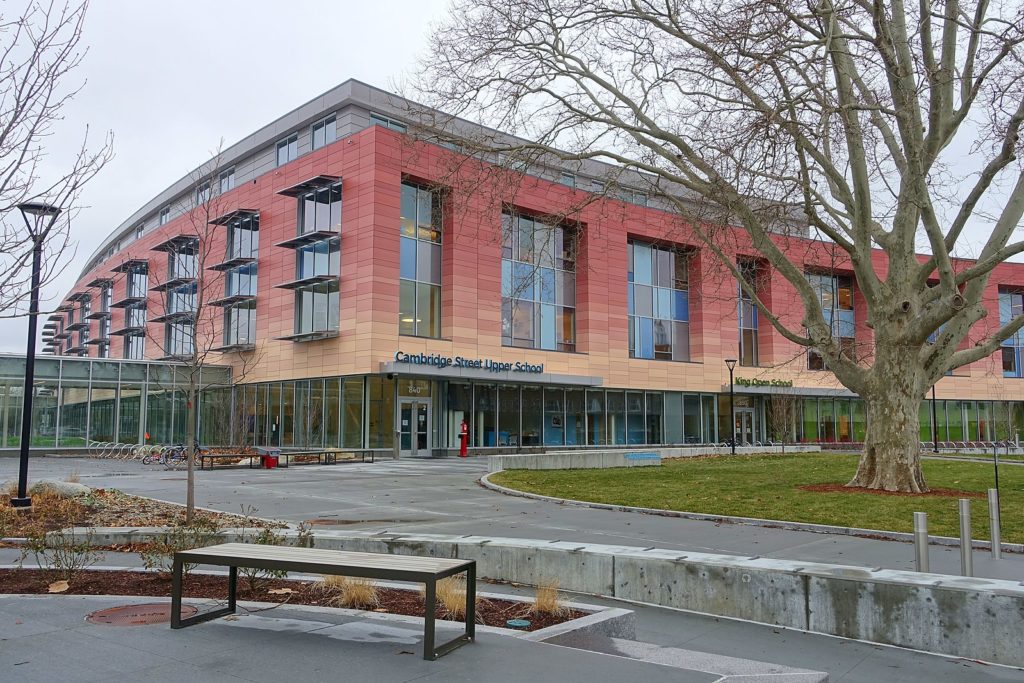State Conference On Sustainability In School Building Projects Emphasizes Early Planning, Engagement With Communities, And Commitment By Municipalities

Cambridge Street Upper Schol and King Open School, Cambridge, MA. The $159 million facility is also the only school currently in Massachusetts to have attained both Net Zero Emissions and LEED v4 Schools Platinum Certification. The building is designed to use 44% less energy than a typical Massachusetts school. Photo: Wikimedia Commons
iThe Massachusetts School Building Authority hosted a conference titled “Massachusetts Schools Embrace A Sustainable Future” on December 1, 2021. The day-long program featured nearly 40 designers, engineers, and school officials sharing information on net zero school building projects from across the Commonwealth. Their experiences ranged from elementary to secondary to technical high schools, included major renovations and all new construction, and represented projects conducted both with and without MSBA funding.
Several presenters credited public discussions to identify common priorities, and collaboration with community stakeholders early in the process as critical to a finished product that met its goals for climate action. Many of the municipalities employ Energy Managers who were also instrumental in achieving the metrics that were laid out during energy modeling toward a specific Energy Use Intensity (EUI), a measure of annual energy cost per square foot. While Amherst does not currently support such a position, the Energy and Climate Action Committee recommended last year that the Town bring one on board. A genuine commitment to sustainability and climate action by both school and town officials was frequently cited as key to success.
Many of the projects opted for geothermal, or ground-sourced heating/cooling as their fossil fuel-free energy source. While payback on initial investment was not anticipated to be met even in 30 years, the lower maintenance and favorable impact on the EUI was determined to be worth it. Some projects took a hybrid approach, using a ground-sourced system in higher intensity use areas of the buildings, for example spaces that are also utilized by the community at large, while using air-sourced units in purely academic areas.
Minimizing EUI was also identified as critical to addressing the frequent challenge of finding enough suitable space on site for the photovoltaic panels required to generate the necessary electricity. In addition to arrays on rooftops (sometimes even above recessed HVAC units) and canopies over parking lots, building integrated photovoltaics (BIPVs) were also employed, predominantly on south-facing walls, in concert with shading and natural lighting techniques. The importance of balancing daylighting with glare control and optimizing insulation was also discussed.
A consultant from Eversource encouraged municipalities to apply for incentives offered via Mass Saves to offset costs for projects. The “Path 1” program is available for both new and renovation projects and offers per-square-foot funding for design and post-occupancy that achieves an EUI of 25. Technical assistance in reaching net zero goals is also available.
The zoom conference was attended by more than 150 participants, including representatives from DiNisco Design, the architectural firm recently selected as designers for the current Amherst elementary school building project. The project’s Owner’s Project Manager, Margaret Wood of Anser Advisory, was also listed as an attendee. Amherst’s Elementary School Building Committee does not currently have a member or subcommittee whose focus is net zero building.
